“Blame the Nazi Germans for making me become a gun designer … I always wanted to construct agriculture machinery.”
– Mikhail Kalashnikov
A weapon has no politics. Only the man holding it has.
By this reasoning we do not see the AK-47 as some deplorable tool for spreading chaos and communism. Instead we respect it as a feat of modern engineering. Although Russia’s influence in global affairs surely helped, the AK-47 owes much of its status as the world’s most produced firearm to its simple and reliable design.
The AK-47 was developed by Mikhail Kalashnikov, a tinkerer turned firearm designer. His vision for “a weapon of defense” and “not a weapon for offense” came to him shortly after his service during the Battle of Bryansk.
The Battle of Bryansk
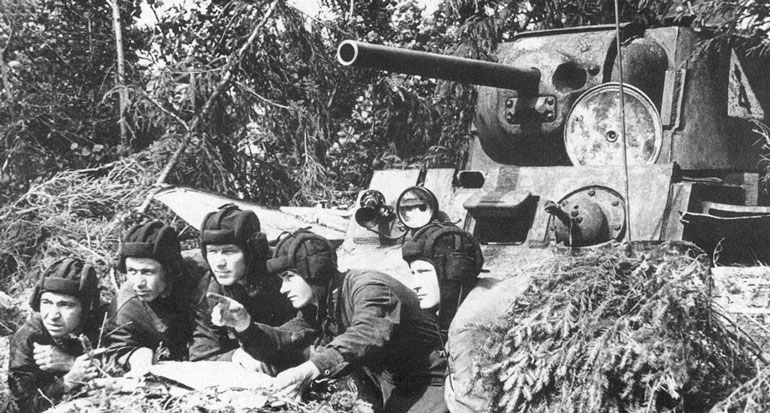
The Battle of Bryansk took place during the first three weeks of October in 1941. It was a part of Nazi Germany’s Operation Typhoon, an unsuccessful attempt to invade Moscow that would ultimately prove instrumental in their downfall. The Battle of Bryansk didn’t go as badly for the Germans as their overall offensive, however.
By October 2nd, Germany had already isolated a large part of the Red Army on the Western Front. The Russian troops trapped in the Smolensk pocket had two options: quickly engage the Germans in an attempt to drive back their invasion, or wait for additional German tanks to arrive.
The Russians decided more Panzers would not improve their situation. They launched an attack only to find themselves overwhelmed by the existing German force. In addition to the strength of their armored forces, the German army’s selective-fire StG 44 rifle gave them a great advantage over the Russians, many of whom were only armed with bolt-action Mosin-Nagants.
The entirety of the Red Army within the Smolensk pocket was killed, wounded, captured, or repelled back toward Moscow.
Kalashnikov’s Vision
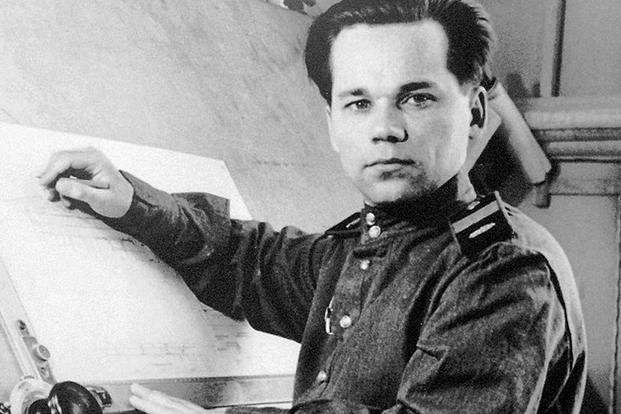
Mikhail Kalashnikov in 1949.
Artillery fire had wounded Senior Sergeant Mikhail Kalashnikov in his left shoulder during the battle. The 21-year-old man managed to walk to a hospital despite his injury. During his stay Kalashnikov experienced repeated nightmares of his companions dying around him, and listened to other wounded men complain about how poorly their rifles had performed in battle.
Kalashnikov began to obsess over creating a superior submachine gun – one which might have saved the lives of his friends and countrymen during the harrowing ordeal he had just endured, and drive the Germans out of his Motherland for good.
Kalashnikov’s Background
Kalashnikov was one of 19 children born to a peasant family in rural south-central Russia. His family often relied on hunting to put food on the dinner table, so he learned to use his father’s rifle at a young age. He had always had an aptitude for machinery as well, taking a job as a mechanic in a tractor factory after completing the seventh grade.
While Kalashnikov worked at the factory, a communist party organizer took note of his skill and work ethic. He issued the young man a directive: to report for work at a nearby armory, where he would test rifle stocks. If Kalashnikov objected to his new assignment, he was wise to do so in secret.
Recruitment to the Red Army forced Kalashnikov to hold off on his weapon development work in 1938. He was a natural tank mechanic, short in stature with previous experience keeping large engines purring. Even as a tank man, the tinkerer took occasional time out to design small arms – the seeds of the AK-47.
Development of the AK-47
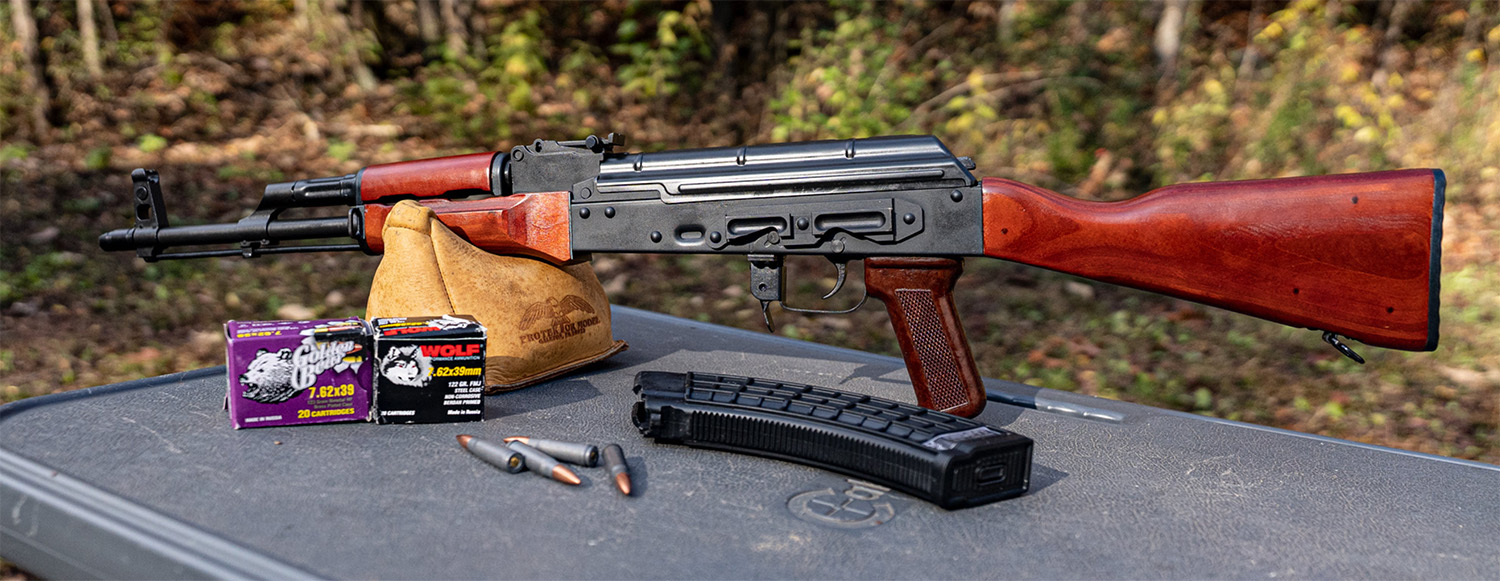
While recovering, Kalashnikov conceived an automatic rifle that would combine the best aspects of Germany’s StG 44 and America’s M1 Garand. He also took care to design an especially cost-efficient weapon, as he wished for Russian soldiers to no longer have to share rifles during battle.
Kalashnikov began working on his submachine gun in the year following Russia’s defeat at Bryansk. In 1944 he was given a newly developed cartridge and told that other firearm designers were already doing interesting things with it. Kalashnikov took this rather unsubtle hint and began redesigning his new rifle around the 7.62×39.
Later that year Kalashnikov entered his prototype into a design contest. He lost to fellow weapon designer Sergei Gavrilovich Simonov. In 1946 another competition for a new rifle was announced. This time Kalashnikov’s entry, a gas-operated rifle with a curved, 30-round magazine and optional milled or stamped receiver, was chosen.
He completed the first prototypes of the Avtomat Kalashnikova in 1947 – hence the name “AK-47.” The simple rifle featured a combined upper and lower receiver, with a single lever which controlled selective fire as well as acted as the safety mechanism. Field trials showed the AK-47 was reliable and convenient to operate under a broad range of harsh conditions.
The Soviet Army finally adopted the “7.62 mm Kalashnikov rifle (AK)” in 1949.
Kalashnikov After the AK-47
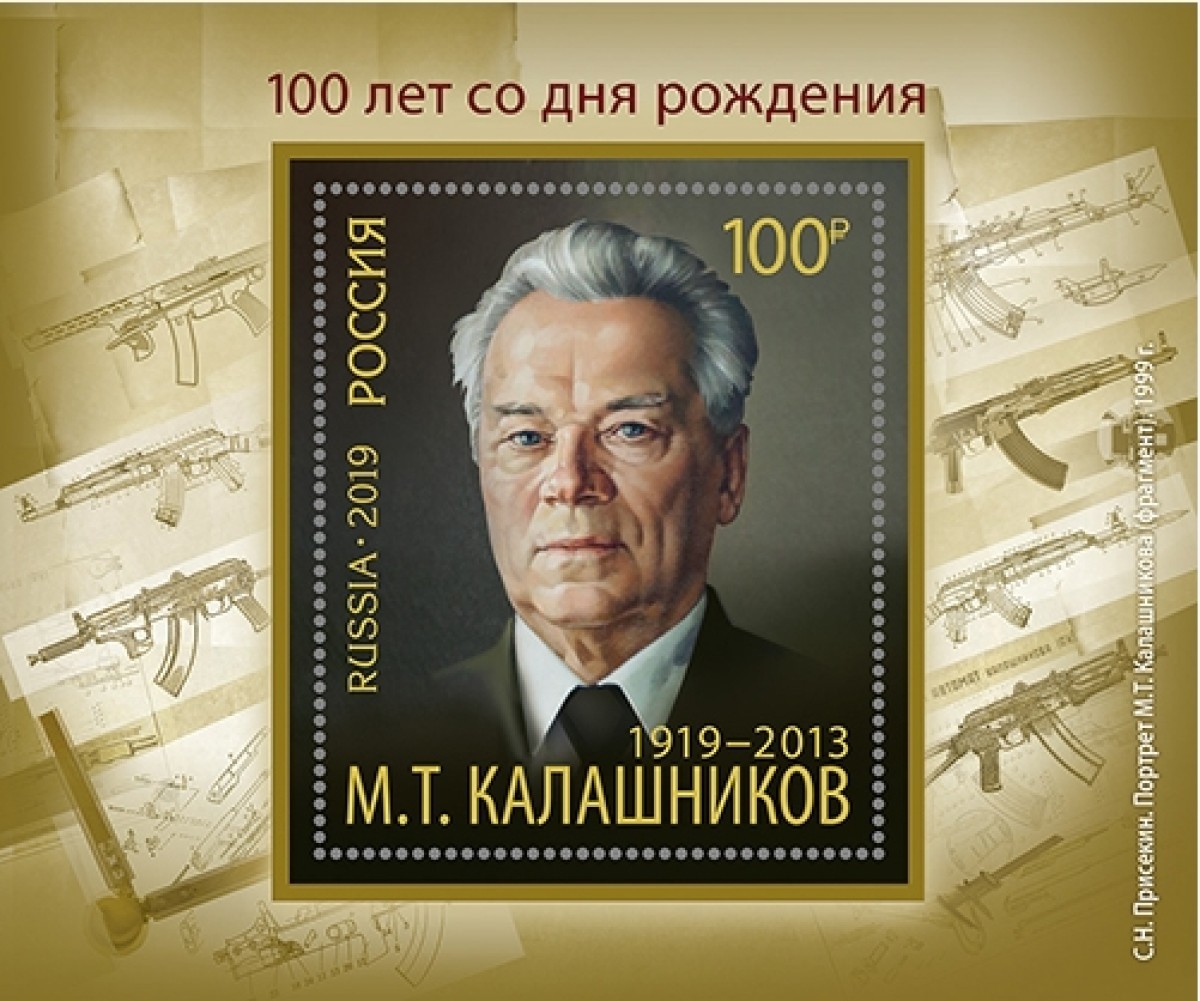
Kalashnikov continued working long after the Soviet Army adopted his AK-47. With his Doctor of Science degree in hand he developed the AKM assault rifle, an improvement over the AK-47 which would go into service in 1959. He eventually developed the AKM light machine gun and the belt-fed PK machine gun.
Kalashnikov got to visit America following the end of the Cold War. In 1990 he traveled to Washington, D.C. where he met with Eugene Stoner, the creator of the AR-15. (See how the two rifles compare in this article.) In spite of their language barrier the two men became fast friends, trying out each others’ inventions at a local gun range and witnessing new weapon testing at Marine Corps Base Quantico.
Kalashnikov Questions Role In Conflicts
Later in life the inventor would express regret that the AK-47, which he had designed to defend his homeland, would become so widely used in armed conflicts throughout the world. Kalashnikov did not actually profit from the proliferation of the AK-47. The Soviet Union gave the design for his rifle to 47 fraternal countries including East Germany, China and North Korea, and about half of all AK-47 rifles ever made are counterfeit.
One year before his death in 2013 Kalashnikov mailed a letter to Patriarch Kirill of the Russian Orthodox Church. “I keep having the same unsolved question,” he wrote. “If my rifle claimed people’s lives, then can it be that I … a Christian and an Orthodox believer, was to blame for their deaths?” He continued: “The longer I live, the more this question drills itself into my brain…”
Kirill assured the old man that he had done right in the eyes of his Creator. “The Church has a well-defined position when the weapon is [used in] defense of the Motherland,” Kirill wrote. “The Church supports its creators and the military, which use it.”
Kalashnikov died in 2013 at the age of 94.
“I sleep well,” Kalashnikov said before his passing. “It’s the politicians who are to blame for failing to come to an agreement and resorting to violence.”



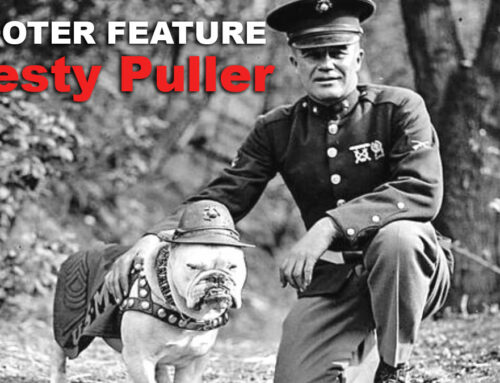


Leave A Comment